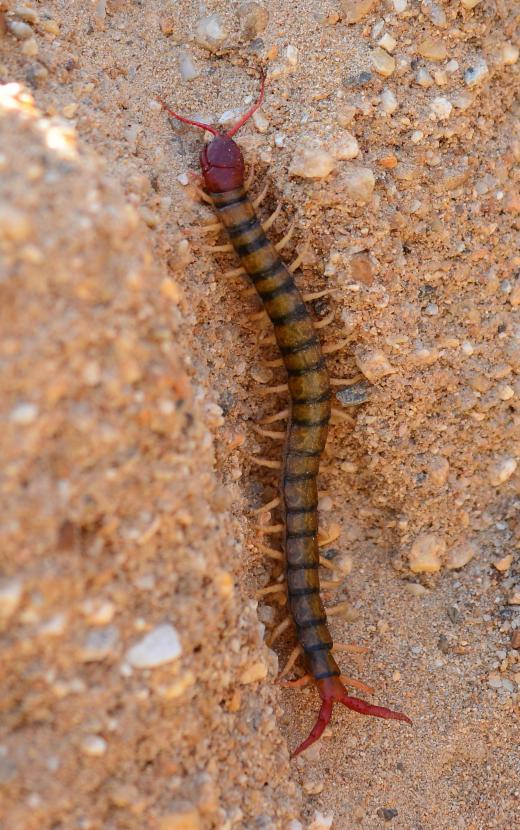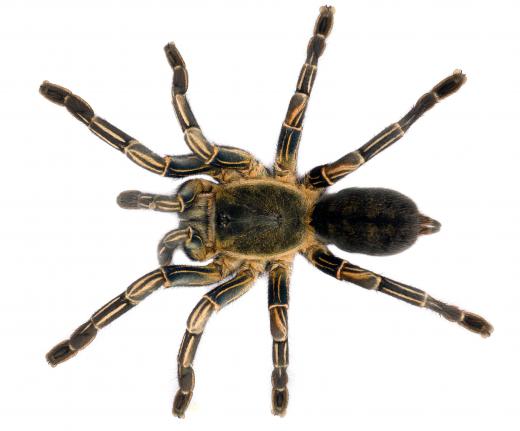What are Arthropods?
 Michael Anissimov
Michael Anissimov
Arthropods are a major category of animals, encompassing insects, arachnids, crustaceans, centipedes, and a few others. In Greek, arthropod means "jointed foot," a reference to one of the defining characteristics of the phylum — a segmented body with appendages. Arthropods are the most successful and diverse of all animal phyla, in terms of their numbers and ubiquity. They make up about 80% of all animal species, and over a million have been given scientific names.
All arthropods have a dorsal (on top) heart and a ventral (on bottom) nervous system. They are covered by an exoskeleton made of chitin, a rigid polysaccharide which serves as a sort of armor and protects arthropods from drying out. When an arthropod grows, it must shed its layers. In today's world, arthropods tend to be relatively small, generally smaller than a half meter in size, although a few, like the Japanese spider crab, have a leg span up to 3.5 m (12 ft). The smallest arthropods are plankton about 300 microns large.

Some ancient arthropods, such as Jaekelopterus, a water scorpion and Arthropleura, a centipede relative, approached 3 m (10 ft) in size and had a greater weight than today's largest arthropod. Generally, oxygen levels are the limiting factor on arthropod size, as their open circulatory systems are not as efficient at circulating blood as the closed circulatory systems of many other animals. During the Carboniferous period, 300 million years ago, the Earth had greater oxygen levels, which allowed the existence of huge arthropods, especially insects, such as the huge dragonfly relative, Meganeura.

Arthropods are a very old phylum, dating back to the Cambrian period (535 million years ago) and perhaps earlier. Trace fossils made by arthropods date back to 535 million years ago, and Spriggina, an enigmatic trilobite precursor which may be an arthropod, dates to 555 million years ago.
Arthropods thrive on heat and moisture. They pursue every conceivable feeding strategy, from herbivorous to carnivorous to scavenging to parasitic. Being one of the most numerous life forms on Earth, you are probably within feet of a few arthropods right now — most likely spiders.
AS FEATURED ON:
AS FEATURED ON:












Discuss this Article
Post your comments